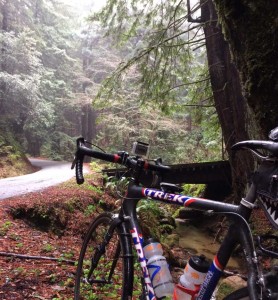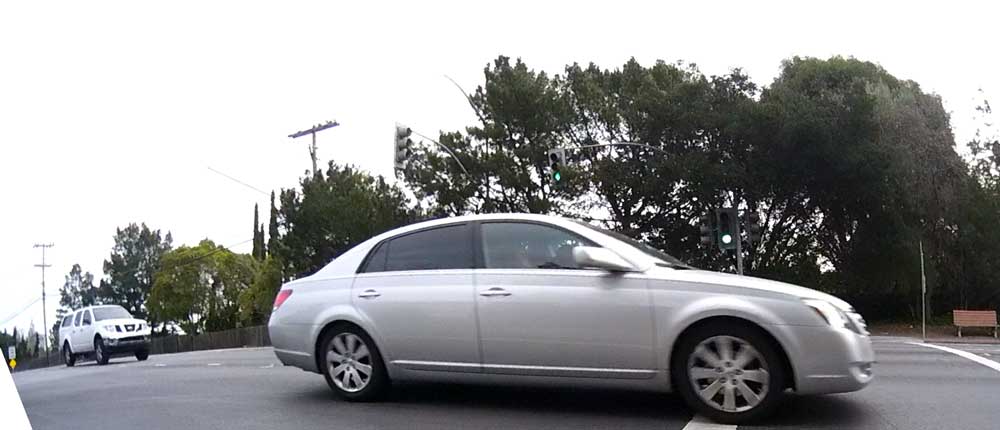
OK, yes, some might think it a bit crazy that I did a solo ride out to the coast and back via Tunitas, in the rain. And some might think crazier yet that I look forward to that sort of thing and was bothered that it didn’t really rain as much as I wished it had. People thinking such things might have a point. Especially since I had a way out, when Kevin didn’t want to ride because he wasn’t feeling well. Had it been nice & sunny would he have felt better? Can’t say.
I finally got out the door at noon, two hours later than planned, and wasn’t at all sure I’d be making it all the way out to the coast. I started thinking about alternatives; maybe heading up West Alpine instead of Tunitas? Or just doing a quick run up Old LaHonda and then maybe a loop through Portola Valley? But the plan was to ride out 84 to the coast and return via Tunitas, and why not? As usual I started feeling better as I got going, and in no time at all it just seemed inevitable that I was going to make my date with Tunitas. Besides, how long has it been since Tunitas Creek actually had water?
Water. Rain. Not enough of it, really. I had a light rain and occasional drizzle the whole ride, but none of that epic sky-is-falling stuff that legendary rides are made from. But it was pretty gloomy out there, without even a brighter spot in the sky that would let you know where the sun was hiding, and that made for ideal conditions to notice the visibility, or lack thereof, of the few other riders I encountered.
Why aren’t people paying attention to their visibility??? There are modern, low-cost lights available that make an amazing difference in whether you can be seen, and it was surprising that maybe half of the cyclists out today had no lighting whatsoever, and half of those who did, had only rear flashing lights. Only a very small number of headlights, and that’s just nuts. Even on a bright sunny day a flashing headlight can make you stand out from the background, and on a day like today?
There are lightweight, inexpensive, easily installed & recharged front lights that we couldn’t have dreamed of just a few years ago. Lights that will help you be seen not just from the front, but the sides as well. I have literally seen people at intersections do double-takes as I approached, stopping them in their tracks instead of plowing on through and requiring me to slow down or take evasive action.
- Normal daytime lighting- Serfas Thunderbolts front & rear (both in flashing mode)
- Darker daytime lighting- As above plus Niterider Lightning Bug 100 added to the front, standard red light in the rear, both in flashing mose.
- Night use- Serfas Thunderbolt plus Niterider 350 up front (Thunderbolt in flashing mode, technically not legal), with Thunderbolt & standard flashing red tail lights in the back.
Is this excessive? I don’t think so. It’s not even expensive. When you consider what you had to spend for a bright front light just a few years ago, spending $90 for a pair of Thunderbolts (one front, one rear) is pretty reasonable, and far more effective. Double that for darker days and you’re still under the price of a high-end helmet. If you want to go totally minimal, you can get something like the Blackburn Flea, but my concern with those is that there’s just not enough there there. Half as bright as a Thunderbolt or Lightning Bug 100, without the Thunderbolt’s side visibility or the Lightning Bug’s usefulness as a night-time see-where-you’re-going light.
